Related Research Articles

Photography is the art, application, and practice of creating images by recording light, either electronically by means of an image sensor, or chemically by means of a light-sensitive material such as photographic film. It is employed in many fields of science, manufacturing, and business, as well as its more direct uses for art, film and video production, recreational purposes, hobby, and mass communication. A person who captures or takes photographs is called a photographer.
Panoramic photography is a technique of photography, using specialized equipment or software, that captures images with horizontally elongated fields of view. It is sometimes known as wide format photography. The term has also been applied to a photograph that is cropped to a relatively wide aspect ratio, like the familiar letterbox format in wide-screen video.
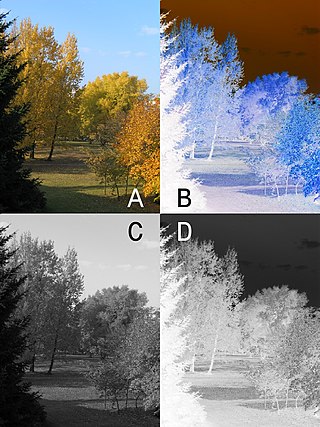
In photography, a negative is an image, usually on a strip or sheet of transparent plastic film, in which the lightest areas of the photographed subject appear darkest and the darkest areas appear lightest. This reversed order occurs because the extremely light-sensitive chemicals a camera film must use to capture an image quickly enough for ordinary picture-taking are darkened, rather than bleached, by exposure to light and subsequent photographic processing.
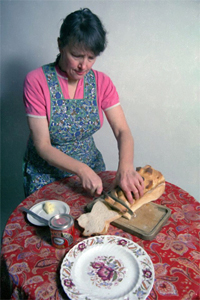
Jo Spence was a British photographer, a writer, cultural worker, and a photo therapist. She began her career in the field of commercial photography but soon started her own agency which specialised in family portraits, and wedding photos. In the 1970s, she refocused her work towards documentary photography, adopting a politicized approach to her art form, with socialist and feminist themes revisited throughout her career. Self-portraits about her own fight with breast cancer, depicting various stages of her breast cancer to subvert the notion of an idealized female form, inspired projects in 'photo therapy', a means of using the medium to work on psychological health.
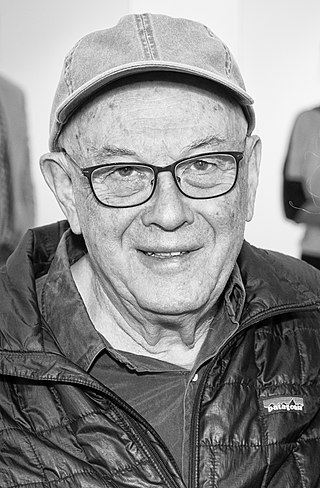
Bruce Landon Davidson is an American photographer, who has been a member of the Magnum Photos agency since 1958. His photographs, notably those taken in Harlem, New York City, have been widely exhibited and published. He is known for photographing communities that are usually hostile to outsiders.
The following outline is provided as an overview of and topical guide to photography:
Nate Larson is a Baltimore-based artist and photographer known for investigating contemporary American culture and history.

Carol Jerrems was an Australian photographer/filmmaker whose work emerged just as her medium was beginning to regain the acceptance as an art form that it had in the Pictorial era, and in which she newly synthesizes complicity performed, documentary and autobiographical image-making of the human subject, as exemplified in her Vale Street.
Nathan Lyons was an American photographer, curator, and educator. He exhibited his photographs from 1956 onwards, produced books of his own and edited those of others.
Peter Turner (1947–2005) was a photographer, curator, and writer. He was the longest-serving editor of Creative Camera.
Dan McCormack is a photographer and professor at Marist College in New York, where he heads the photography program.

Light Work is a photography center in Syracuse, New York. The artist-run nonprofit supports photographers through a community-access digital lab facility, residencies, exhibitions, and publications.

Visual Studies Workshop (VSW) is a non-profit organization dedicated to art education based in Rochester, New York, in the Neighborhood of the Arts. VSW supports makers and interpreters of images through education, publications, exhibitions, and collections. VSW houses a bookstore, microcinema, exhibition gallery, and research center, and hosts artists-in-residence.
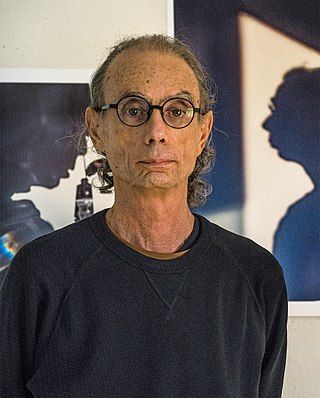
David Lebe is an American photographer. He is best known for his experimental images using techniques such as pinhole cameras, hand-painted photographs, photograms, and light drawings. Many of his photographs explore issues of gay identity, homoeroticism, and living with AIDS, linking his work to that of contemporaries such as Robert Mapplethorpe, Peter Hujar, and David Wojnarowicz. Though his style and approach set him apart from these contemporaries, "Lebe is now incontrovertibly part of the history of twentieth-century queer artists."
Deborah Bright is a 20th-century American photographer and artist, writer, and educator. She is particularly noted for her imagery and scholarship on queer desire and politics, as well as on the ideologies of American landscape photography. Her work is in the collections of the Smithsonian American Art Museum, the Fogg Art Museum, and the Whitney Museum of American Art. Bright's photographic projects have been exhibited internationally.
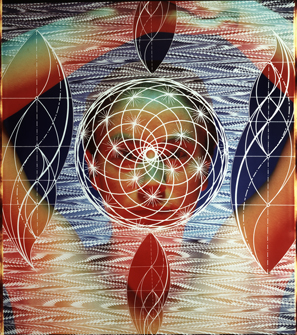
Ellen Carey is an American artist known for conceptual photography exploring non-traditional approaches involving process, exposure, and paper. Her work has ranged from painted and multiple-exposure, Polaroid 20 x 24, Neo-Geo self-portraits beginning in the late 1970s to cameraless, abstract photograms and minimal Polaroid images from the 1990s onward, which critics often compare to color-field painting. Carey's sixty one-person exhibitions have been presented at museums, such as the Amon Carter Museum of American Art, International Center of Photography (ICP) and Wadsworth Atheneum Museum of Art, alternative spaces such as Hallwalls and Real Art Ways, and many commercial galleries. Her work is in numerous museum collections, including those of the Metropolitan Museum of Art, Whitney Museum of American Art, Los Angeles County Museum of Art, Centre Pompidou, and Smithsonian American Art Museum. In 2019, she was named one of the Royal Photographic Society (London) "Hundred Heroines", recognizing leading women photographers worldwide. Los Angeles Times critic Leah Ollman describes her photography as "inventive, physically involving, process-oriented work" and her recent photograms as "performative sculptures enacted in the gestational space of the darkroom" whose pure hues, shadows and color shifts deliver "optical buzz and conceptual bang". New York Times critic William Zimmer wrote that her work "aspires to be nothing less than a reinvention, or at least a reconsideration, of the roots or the essence of photography." In addition to her art career, Carey has also been a longtime educator at the Hartford Art School and a writer and researcher on the history of photography.
Anne Savedge is an American photographic artist and art educator.
Adam Magyar is a photographer and video artist.
Nancy Floyd, born in Monticello, Minnesota in 1956, is an American photographer. Her photographic subjects mainly concern women and the female body during youth, pregnancy, and while aging. Her project She's Got a Gun comprises portraits of women and their firearms, which is linked to her Texas childhood. Floyd's work has been shown in 18 solo exhibitions and is held in the collections of the Museum of Contemporary Photography and the High Museum of Art. Floyd is a professor emeritus of photography at the Ernest G. Welch School of Art and Design at Georgia State University.
Eileen Perrier is a British portrait photographer, living in London. She has had solo exhibitions at Whitechapel Gallery and The Photographers' Gallery, London. Perrier's work is held in the collections of Tate, Light Work and the Parliament of the United Kingdom.
References
- ↑ "Lot 38: Robert Hirsch". www.cepagallery.org. Archived from the original on 8 June 2020. Retrieved 8 June 2020.
- ↑ "Getting to Know Your Art Community: Robert Hirsch". Buffalo Rising. 13 July 2016. Retrieved 8 June 2020.
- ↑ "Light Work Collection / Individual / Robert Hirsch [Hirsch, Robert]". collection.lightwork.org. Retrieved 9 June 2020.
- ↑ "Mugs:Anthropometric Portraits" (PDF). lightresearch.net. Retrieved 8 June 2020.
- ↑ "Robert Hirsch". www.amazon.com. Retrieved 6 June 2020.
- ↑ "LIGHT AND LENS: PHOTOGRAPHY IN THE DIGITAL AGE". www.mutualart.com. Retrieved 7 June 2020.
- ↑ Richard, Huntington. "Making History Photographer uses black and white to fabricate history" (PDF). lightresearch.net. The Buffalo News. Retrieved 6 June 2020.
- ↑ Light work annual. Light Work (Organization : Syracuse, N.Y.). Syracuse, NY: Light Work Visual Studies. 2000. ISBN 0-935445-16-1. OCLC 56080072.
{{cite book}}: CS1 maint: others (link) - ↑ "Art Preview: Hirsch's Cubic Groove". www.buffalospree.com. 6 April 2011. Retrieved 7 June 2020.